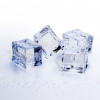Pioneering tomorrow's medicines
Interview with
When the pharmaceutical industry was in its infancy, researchers started with a disease and then looked for a drug that could make a difference. That’s all changed as the industry is able to unpick the mechanisms of diseases, right down to the genes that cause them, and then build treatments that target precisely those pathways or systems that are malfunctioning. Often this involves crafting complex “drugs” called “biologics” that are made by living systems themselves; a good example is antibodies. One of the pioneers in this sector is biochemist Jane Osbourn from the pharmaceutical company AstraZeneca. And she’s just learned that her efforts over the last 2 decades, which have led to the successful launch of a number of drugs that are changing lives all over the world, have been recognised by an OBE on the Queen’s birthday honours list; so Chris Smith spoke to her in the studio about her discoveries...
Jane - Well, maybe if I start by explaining what an antibody is: antibodies are proteins that are produced by cells in your blood, plasma cells, and they are the body's defence mechanism. So they're the way the body protects itself against pathogens - bacteria, viruses - generally referred to as antigens. And the reason that antibodies are so good at this is your body actually makes lots and lots of different versions of these proteins with different shapes, and those shapes can very precisely recognise the complementary shapes on the pathogens - on the antigens - and the antibody's able to neutralise those pathogens.
Chris - And they do it selectively? So they're going to go for the bad guys and they're not gonna touch the good guys?
Jane - That's right, yeah. So they have a way of recognising what's foreign and what is your normal repertoire of antigens. Occasionally you do have issues with that, with autoimmune diseases, but in general it's very, very effective.
Chris - And how are you seeking to utilise our knowledge of how these antibodies work and do that, in order to cure disease?
Jane - Well the great thing, as you said at the beginning, is the very specific nature of these binding interactions. It means that you can target very precisely mechanisms that are disrupted in human disease. And the reason antibodies are so good at that is because you can target a target on a cancer cell, say, or a protein that's upregulated in the blood that may be causing inflammation. So you can specifically target those "bad guys" if you like, and you don't target anything that you wouldn't want to, so you don't get off-target effects which sometimes you can get with the chemical derived drugs.
Chris - You're saying that one would make an antibody that would go after a specific target?
Jane - Absolutely.
Chris - But that means you've got to do that or make the body do that. It doesn't already do that. So how does one go about that?
Jane - So we’ve developed quite a range of different techniques to do that, starting actually back in 1975 really with the invention of monoclonal antibodies, which is a way of making large quantities of a single antibody of a single shape; which was actually developed here in Cambridge by César Milstein and Georges Köhler. So that was a sort of first step. And the first mouse antibodies we used to treat transplant rejection back in the early 80s. Now you don't really want to use a mouse antibody to treat a human because it's a foreign protein.
Chris - So your immune system would recognise, “this is not supposed to be in my body,” and you'd then have your own immune system attacking the very thing that you were trying to make to help you?
Jane - Absolutely. So the holy grail of what we've been trying to do, and many of our colleagues in the industry have been trying to do, is develop fully human antibodies that won't be recognised as foreign by your body. And you can do that by using...you can actually use mice and knockout their own antibody genes and put human genes in there; or you can use a technique called phage display, which is a way of putting antibody genes on the surface of a virus, and then using the virus to select antibodies that bind your drug target, your disease target, that you want to interact with.
Chris - In essence then, you know what the target is you want to go for, you've got to persuade an immune cell to start making the right antibody you're after. How do you then bulk that up? How do you, once you've got an antibody that you know is going to work, how do you make enormous amounts of it so that you've got enough to treat a person?
Jane - If you use the phage display system, you can isolate the genes for the antibody that you want to make. And once you've done that, then you can put those genes into a stable cell system, and you can make large amounts of it in fermenters. So that's actually a relatively simple thing to do now. It's taken 20 years to develop those techniques but we can make large amounts outside the body and then inject them into the patient.
Chris - You move the gene that makes the antibody into some kind of cell that you then grow in enormous quantities in culture.
Jane - Yeah.
Chris - And then you just sieve off the antibodies.
Jane - That's correct, yeah.
Chris - Even so, that sounds like enormous amounts of work, because this industry has been frustrated by the fact that this is very hard to do, and it does end up therefore costing a lot of money, doesn't it? So as the world's population continues to increase, there are 7.5 billion people on earth now, and they all want a slice of the action and access to these wonderful treatments. Can we afford it?
Jane - Well, drug affordability is a real challenge. But what we are doing is working on ways we can make the processes more efficient. We can certainly make a lot more antibody in stable formats than we could when I started in the industry 25 years ago. And I think the key thing is really making sure that we're using antibodies wisely, for the right patients. So we've got a lot more sophisticated in our understanding of how you choose which patients will have the best and the most effective responses to our antibodies.
- Previous Living in the Arctic
- Next Migrations in Siberia










Comments
Add a comment